Digital deconstruction: Paul Stephenson's antique graffiti at StolenSpace
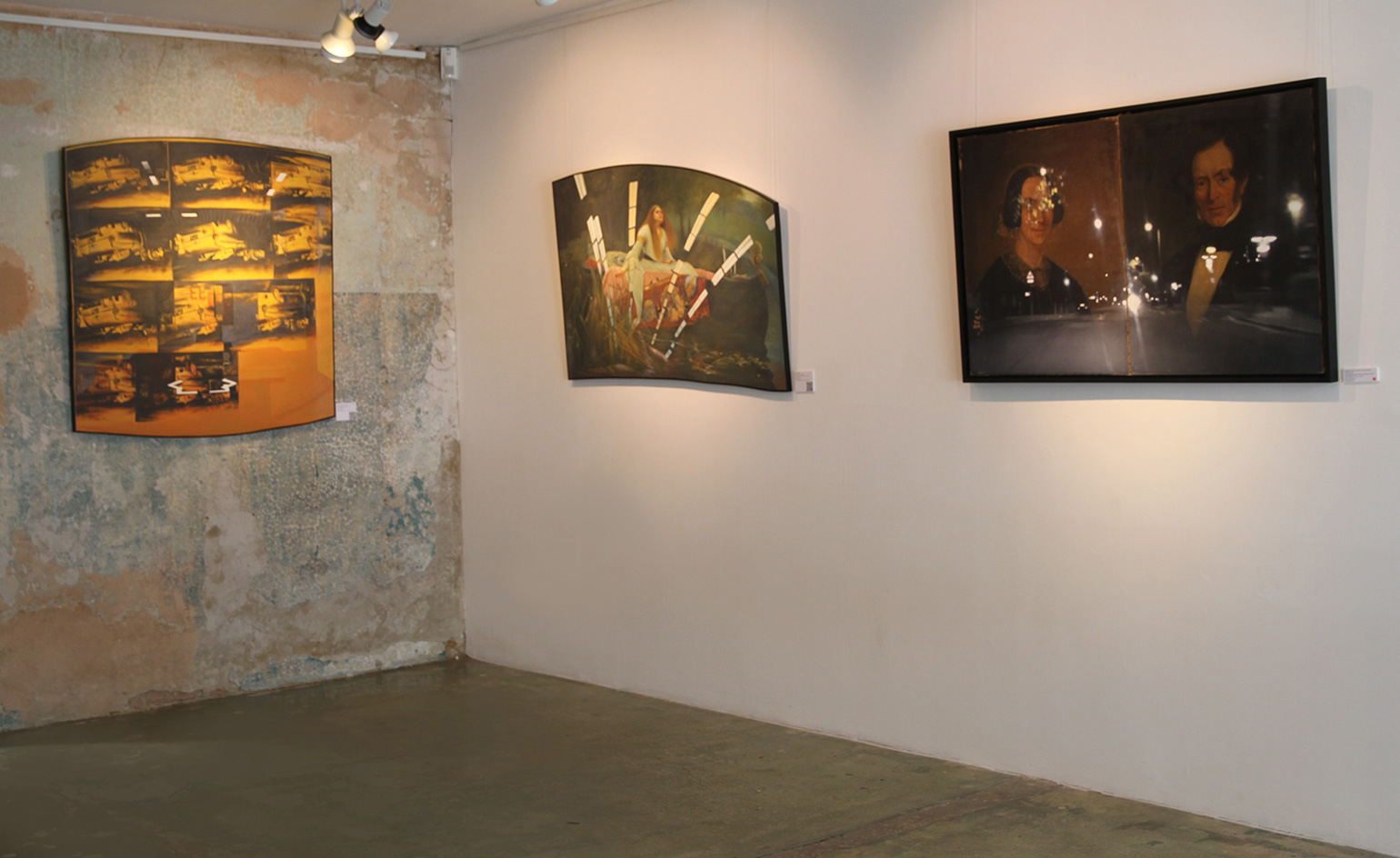
When is an artwork finished? It's a question that plagued artists long before Leonardo Da Vinci famously threw down his brushes (one imagines) and proclaimed, 'Art is never finished, only abandoned.' Adding a whole new curve ball to this torment is London-based artist Paul Stephenson, who gives his own finishing touches to 200-year-old works, a handful of which are currently on display at StolenSpace gallery, Brick Lane.
Stephenson buys 18th and 19th century works at auction from known artists (Alexander Melville, Thomas Bond Walker, William Allsworth) and sets about 'collaborating' with them, mingling old and new in a jarring way that the art world has rarely seen. He's already established a name for himself on the street scene for his novel 'sous rature' technique, where he physically erases sections of pre-existing paintings. This nervy act of removal, the artist explains, draws attention to the 'remaining void', and gives new meaning to the original. 'It's like when the Mona Lisa was stolen in 1911. More people came to look at the vacant space left on the wall than had come to look at the actual painting the previous week.'
StolenSpace gallery – one of a handful of London spaces drawing attention to the increasingly high-end market for 'urban art' – is the ideal home for Stephenson's 'Forced Collaboration', seeing as it is owned by fellow artist D*Face, one of his early inspirations. In the warehouse-style gallery, complete with bare-brick walls, the 'sous rature' technique has been given space to develop into a series of complex new works.
Stephenson's Watermark Paintings also use works bought at auction, but instead of erasing details, he paints new ones. The artist uploads an image of the original painting onto the online photo sharing service Shutterstock, which applies its familiar watermark. Then, he carefully paints this logo directly onto the original, and so 'the work physically and virtually exists simultaneously, in two different spaces'.
Similarly, his Reflection Paintings start life at auction. Stephenson paints phone or computer screen reflections onto original works, commenting on how we're increasingly viewing art through a screen. They're the kind of reflections you might pay little attention to, but when they're immortalised in oil on canvas, the effect on the artwork is undeniable. Stephenson explains, 'I started concentrating on these superimposed images, and seeing the beauty in them.' The billowing cloud-like additions to Reflection on Jane Camp, originally painted by Alexander Melville, 1877, redefine Camp's serene expression, and add a mythical aura to an otherwise face-on, austere Victorian portrait.
Stephenson has no issue with calling his work graffiti, and he's keen to differentiate it from other forms of 'spray-can' art. 'A painting made using aerosol on a blank canvas is not graffiti. The surface is what makes the difference.' By choosing such controversial surfaces to work on, some critics are bound to see it as a little brazen. To others, it's a fascinating way of communicating with a bygone artistic era, while highlighting the changes technology has had on the way we consume art. Stephenson simply thinks of his work as DJing. 'I am taking old paintings and mixing them with different images to make something new, like DJs did in the 1990s. I guess whether it is positive or negative depends on whether you're into hip-hop.'
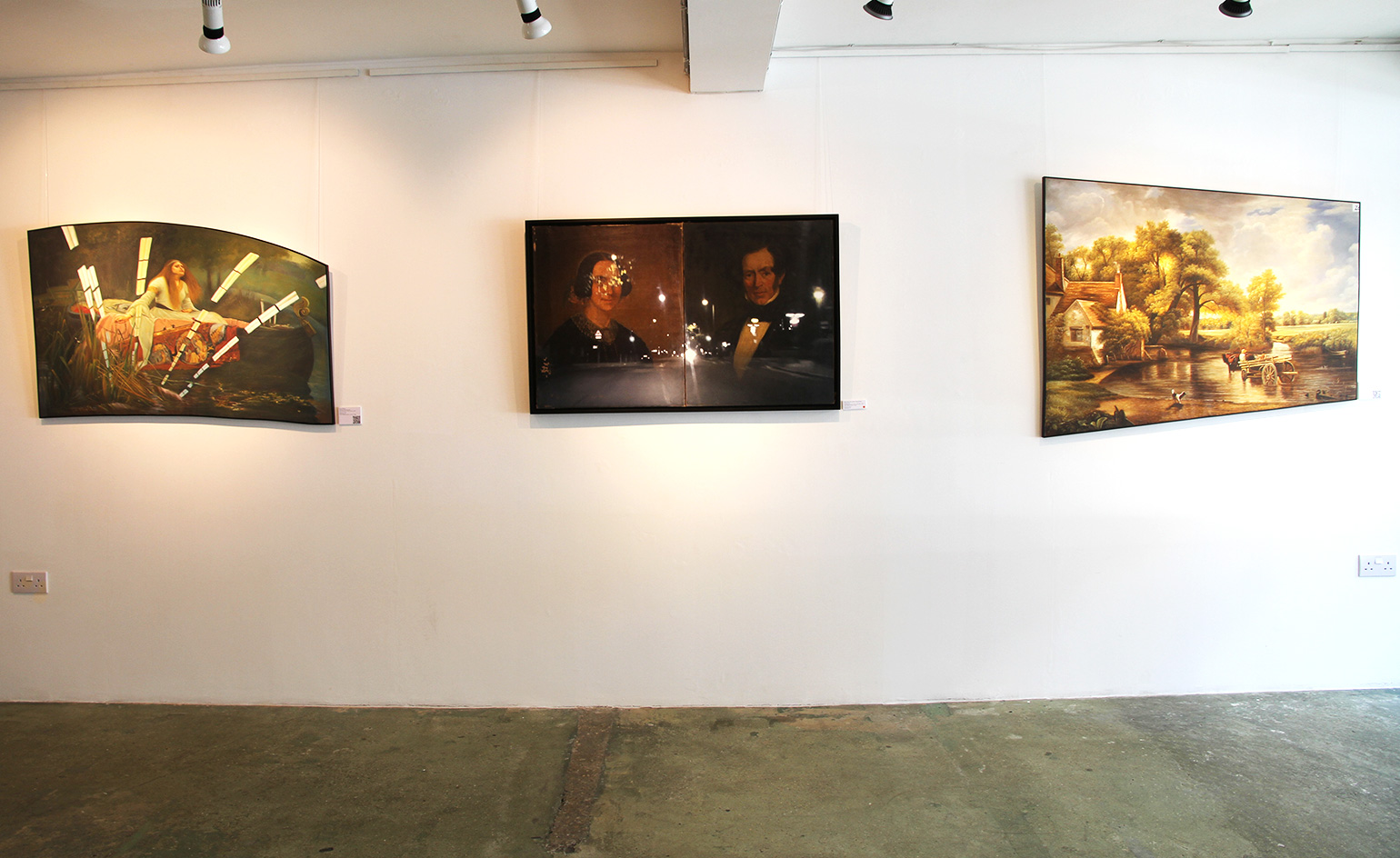
StolenSpace gallery – one of a handful of London spaces drawing attention to the increasingly high-end market for ’urban art’ – is the ideal home for ’Forced Collaboration’, seeing as it is owned by fellow artist D*Face, one of his early inspirations
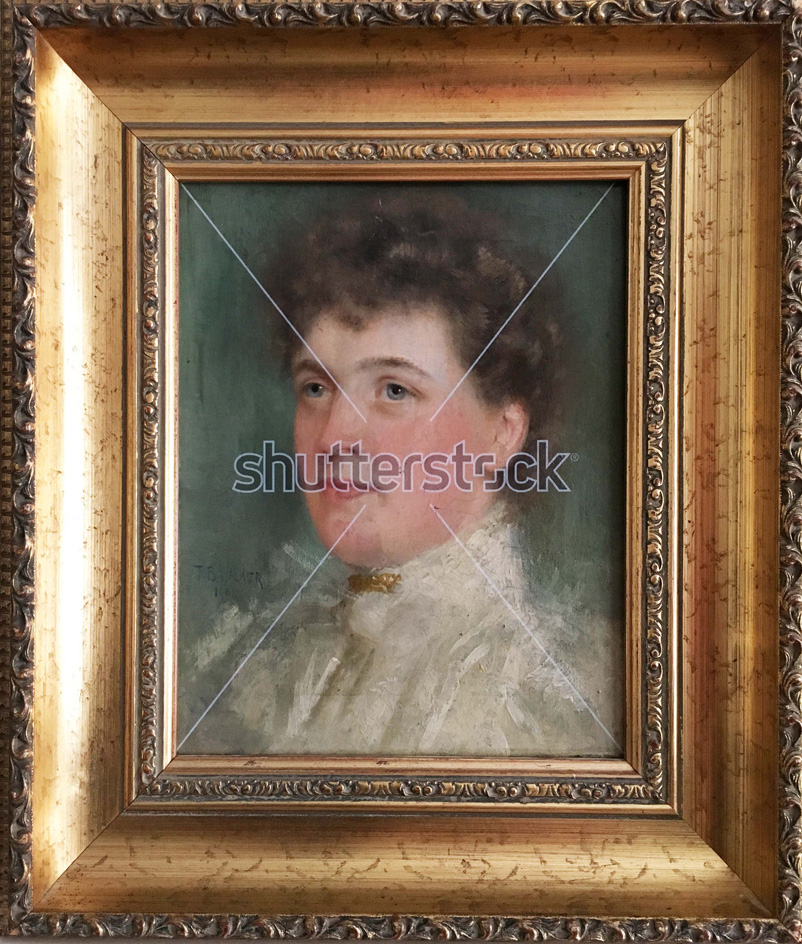
Stephenson’s ’Watermark Paintings’ sees the artist paint new details on auction-bought works. The artist uploads an image of the original painting onto the online photo sharing service Shutterstock, which applies its familiar watermark. Pictured: Watermarked Painting #436544659 (Shutterstock meta) Originally painted by Thomas Bond Walker, 1901, 2016
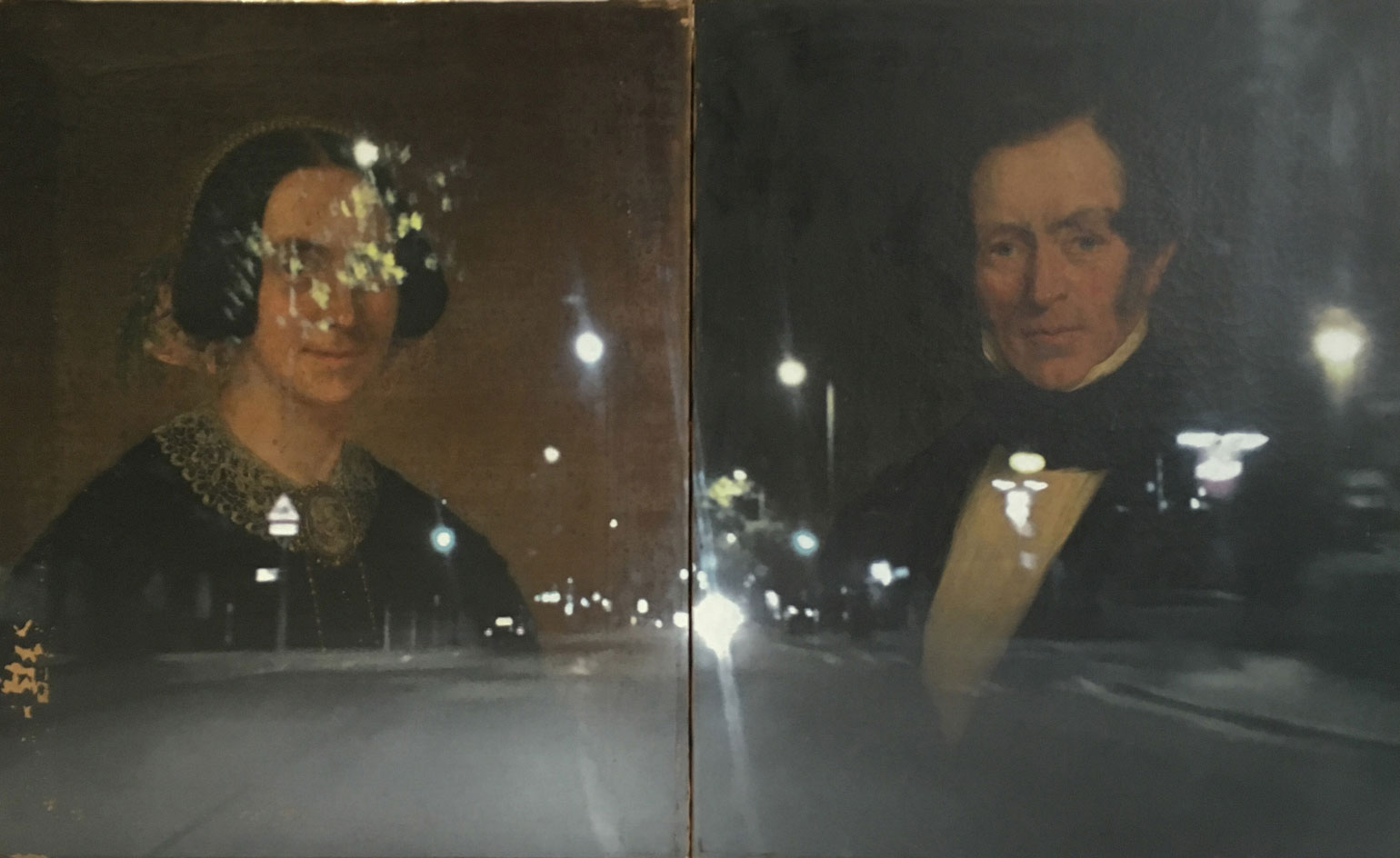
Stephenson paints phone or computer reflections onto original works, commenting on how we’re increasingly viewing art through a screen. Pictured: Reflection on Mr and Mrs Thomas Walker, Camden Town, Originally painted by William Allsworth, 1855, 2016
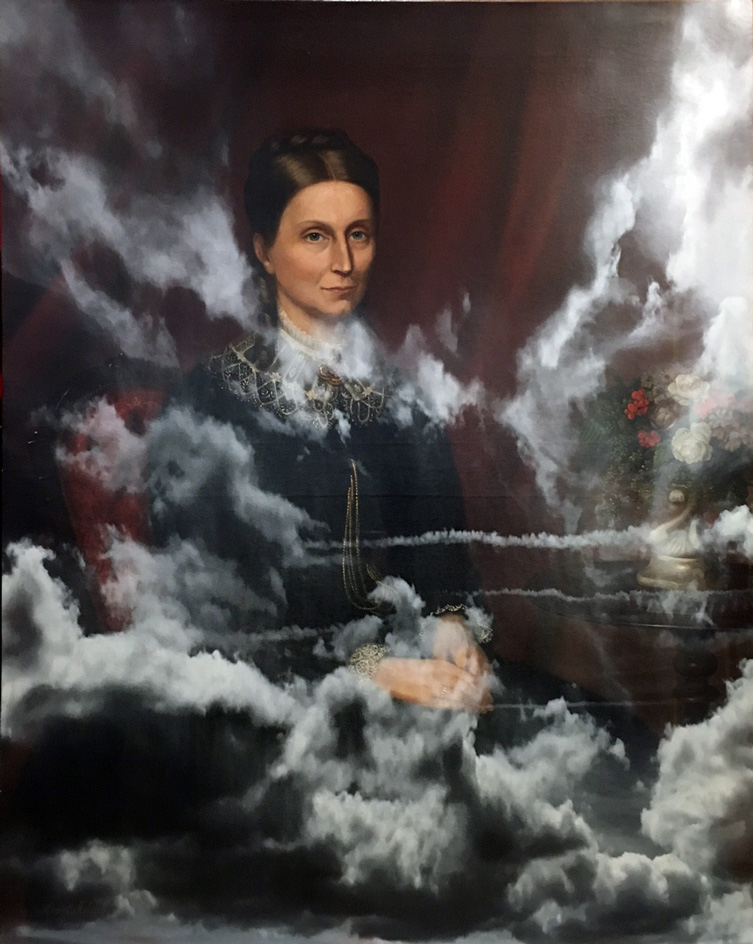
The billowing cloud-like additions to Reflection on Jane Camp (pictured), originally painted by Alexander Melville, 1877, give new meaning to the serene expression on Camp’s face, and add a mythical aura to an otherwise face-on, austere Victorian portrait
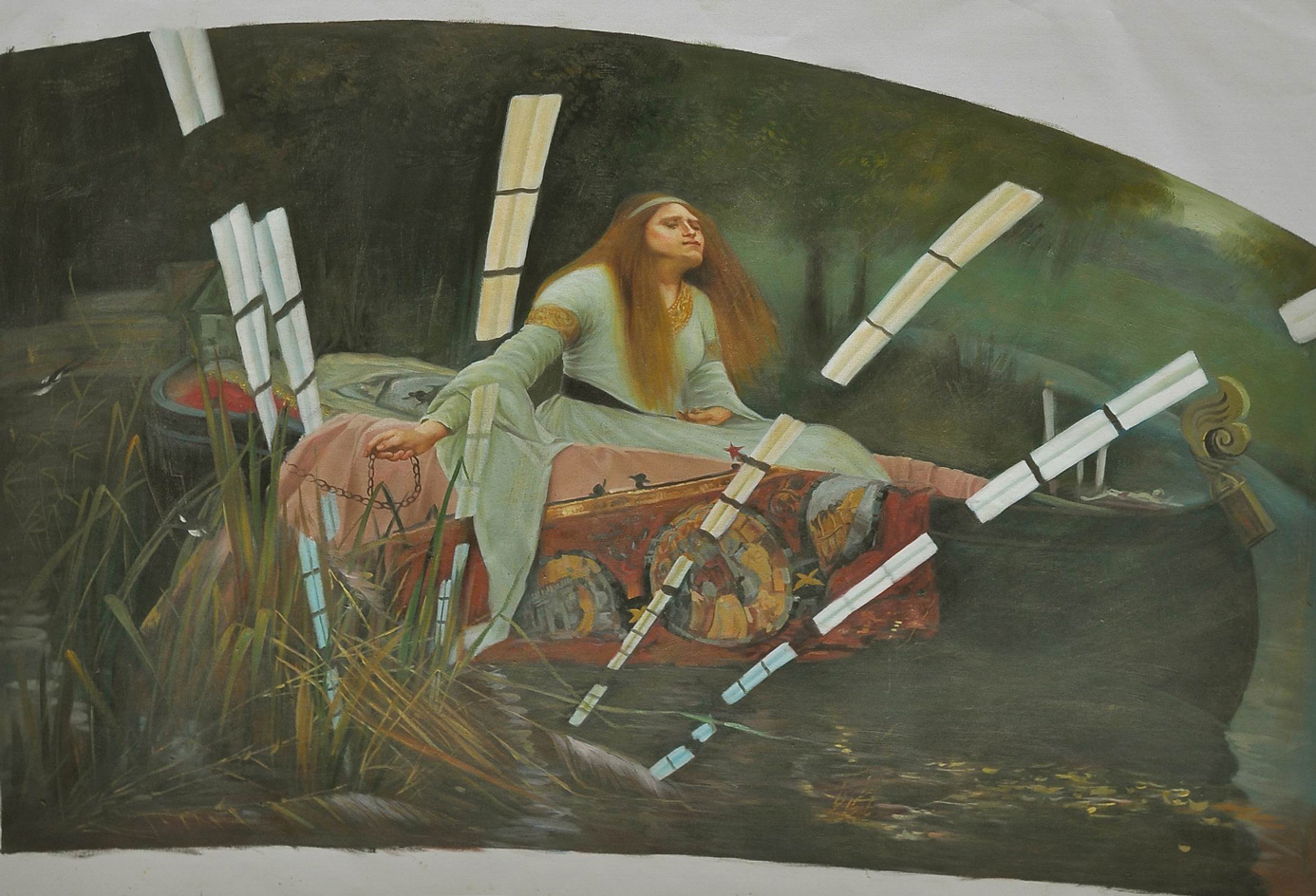
Another series of works included in the exhibition uses distorted images from the ’Google Cultural Insitite’ – an archive that records images for virtual tours. Stephenson recreates them from scratch, painting every Google-imposed incongruity in exacting detail. Pictured: The Lady of Shalott (Google Cultural Institute) After Waterhouse, 2016
INFORMATION
’Forced Collaboration’ is on view until 28 August. For more information, visit the StolenSpace gallery website
ADDRESS
StolenSpace
17 Osborn Street
London, E1 6TD
Wallpaper* Newsletter
Receive our daily digest of inspiration, escapism and design stories from around the world direct to your inbox.
Elly Parsons is the Digital Editor of Wallpaper*, where she oversees Wallpaper.com and its social platforms. She has been with the brand since 2015 in various roles, spending time as digital writer – specialising in art, technology and contemporary culture – and as deputy digital editor. She was shortlisted for a PPA Award in 2017, has written extensively for many publications, and has contributed to three books. She is a guest lecturer in digital journalism at Goldsmiths University, London, where she also holds a masters degree in creative writing. Now, her main areas of expertise include content strategy, audience engagement, and social media.
-
 All-In is the Paris-based label making full-force fashion for main character dressing
All-In is the Paris-based label making full-force fashion for main character dressingPart of our monthly Uprising series, Wallpaper* meets Benjamin Barron and Bror August Vestbø of All-In, the LVMH Prize-nominated label which bases its collections on a riotous cast of characters – real and imagined
By Orla Brennan
-
 Maserati joins forces with Giorgetti for a turbo-charged relationship
Maserati joins forces with Giorgetti for a turbo-charged relationshipAnnouncing their marriage during Milan Design Week, the brands unveiled a collection, a car and a long term commitment
By Hugo Macdonald
-
 Through an innovative new training program, Poltrona Frau aims to safeguard Italian craft
Through an innovative new training program, Poltrona Frau aims to safeguard Italian craftThe heritage furniture manufacturer is training a new generation of leather artisans
By Cristina Kiran Piotti
-
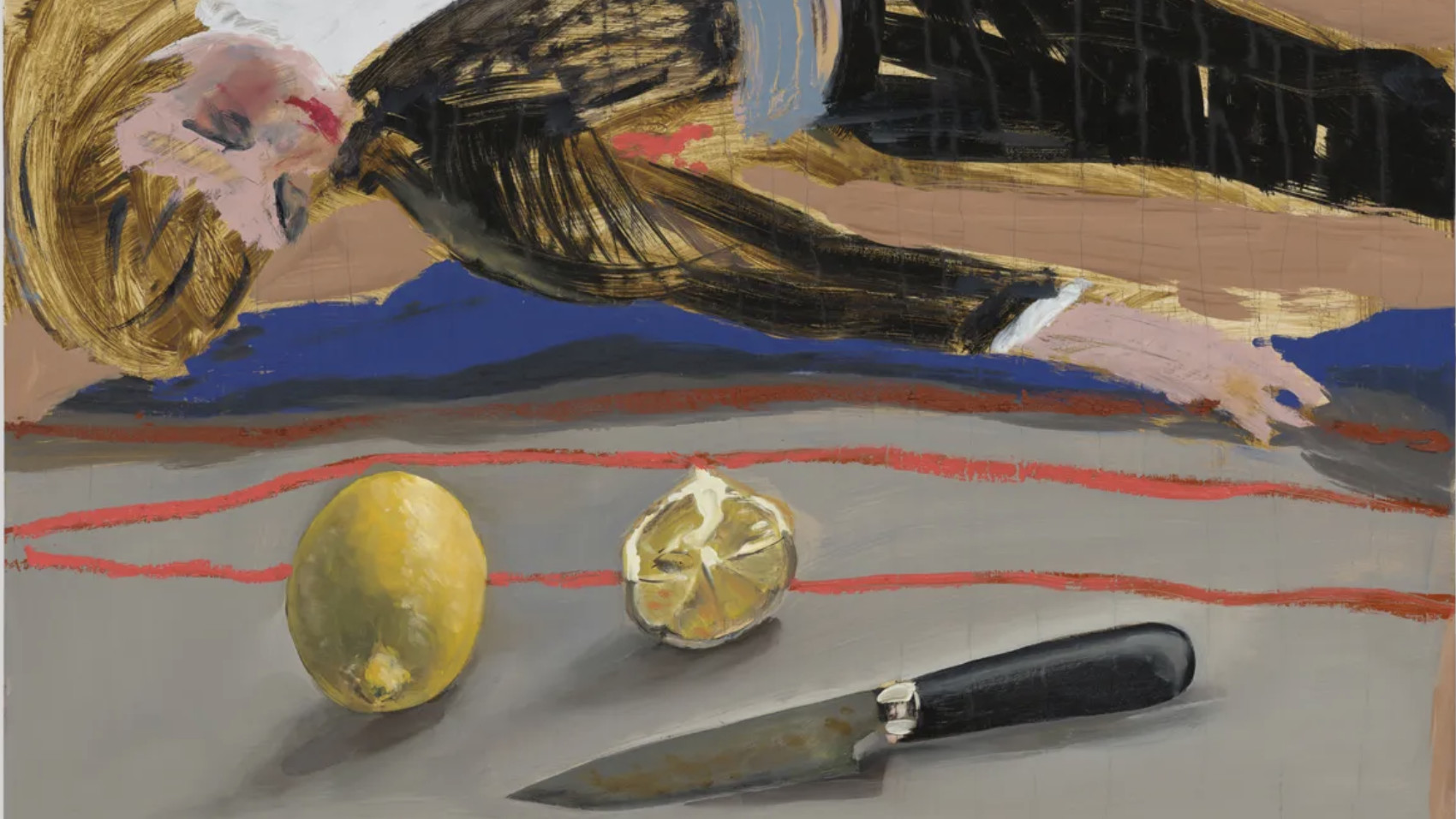 ‘Humour is foundational’: artist Ella Kruglyanskaya on painting as a ‘highly questionable’ pursuit
‘Humour is foundational’: artist Ella Kruglyanskaya on painting as a ‘highly questionable’ pursuitElla Kruglyanskaya’s exhibition, ‘Shadows’ at Thomas Dane Gallery, is the first in a series of three this year, with openings in Basel and New York to follow
By Hannah Silver
-
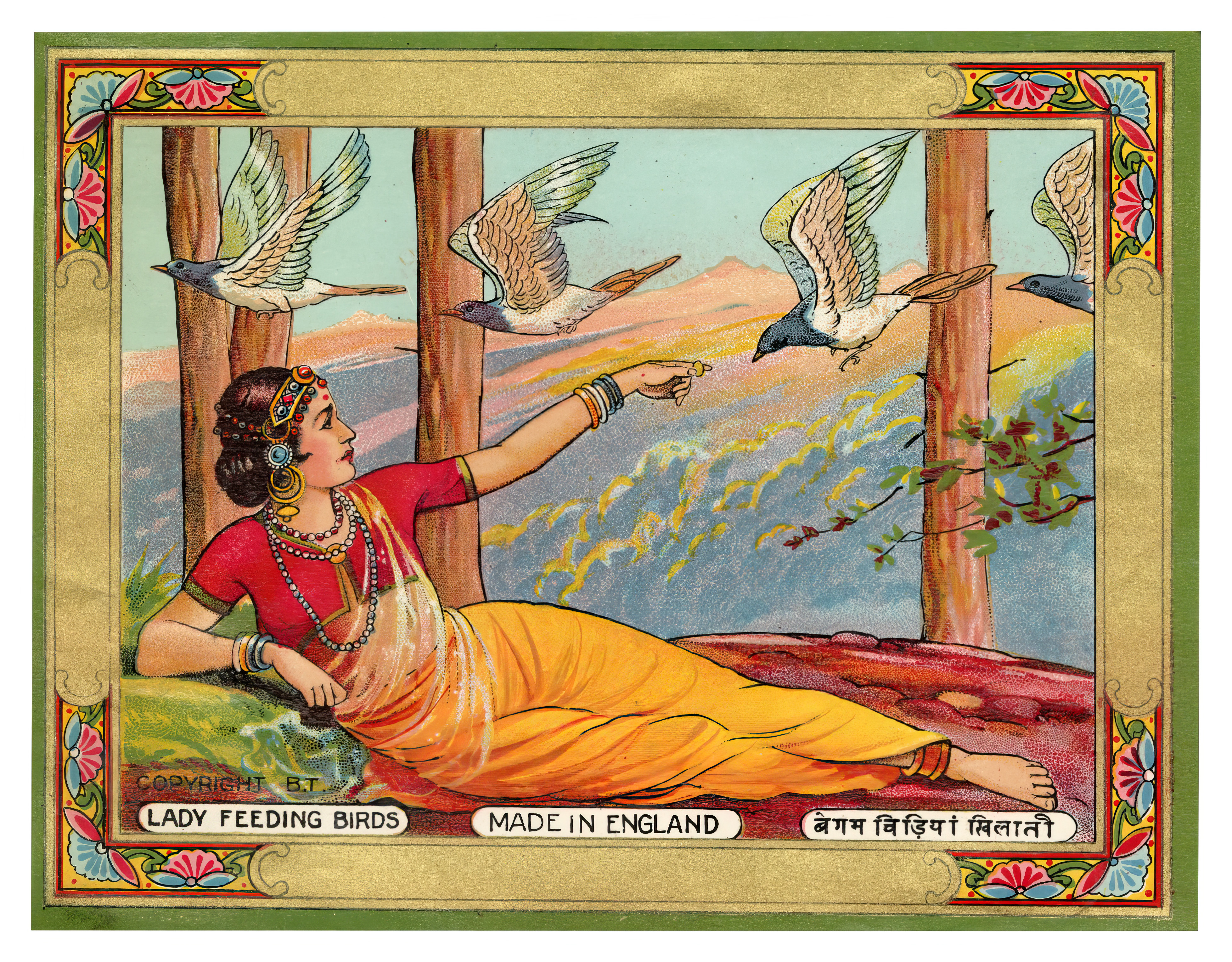 The art of the textile label: how British mill-made cloth sold itself to Indian buyers
The art of the textile label: how British mill-made cloth sold itself to Indian buyersAn exhibition of Indo-British textile labels at the Museum of Art & Photography (MAP) in Bengaluru is a journey through colonial desire and the design of mass persuasion
By Aastha D
-
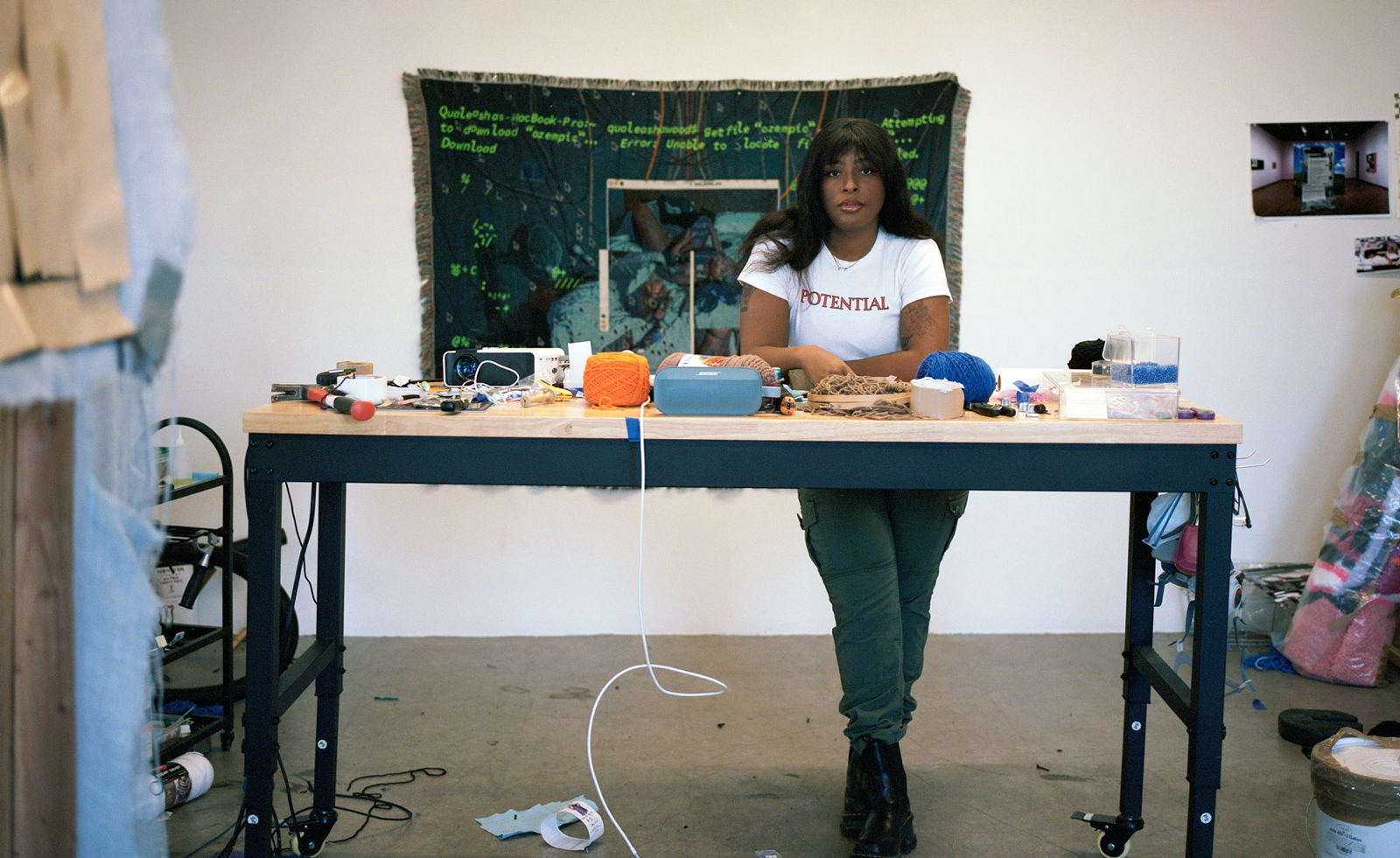 Artist Qualeasha Wood explores the digital glitch to weave stories of the Black female experience
Artist Qualeasha Wood explores the digital glitch to weave stories of the Black female experienceIn ‘Malware’, her new London exhibition at Pippy Houldsworth Gallery, the American artist’s tapestries, tuftings and videos delve into the world of internet malfunction
By Hannah Silver
-
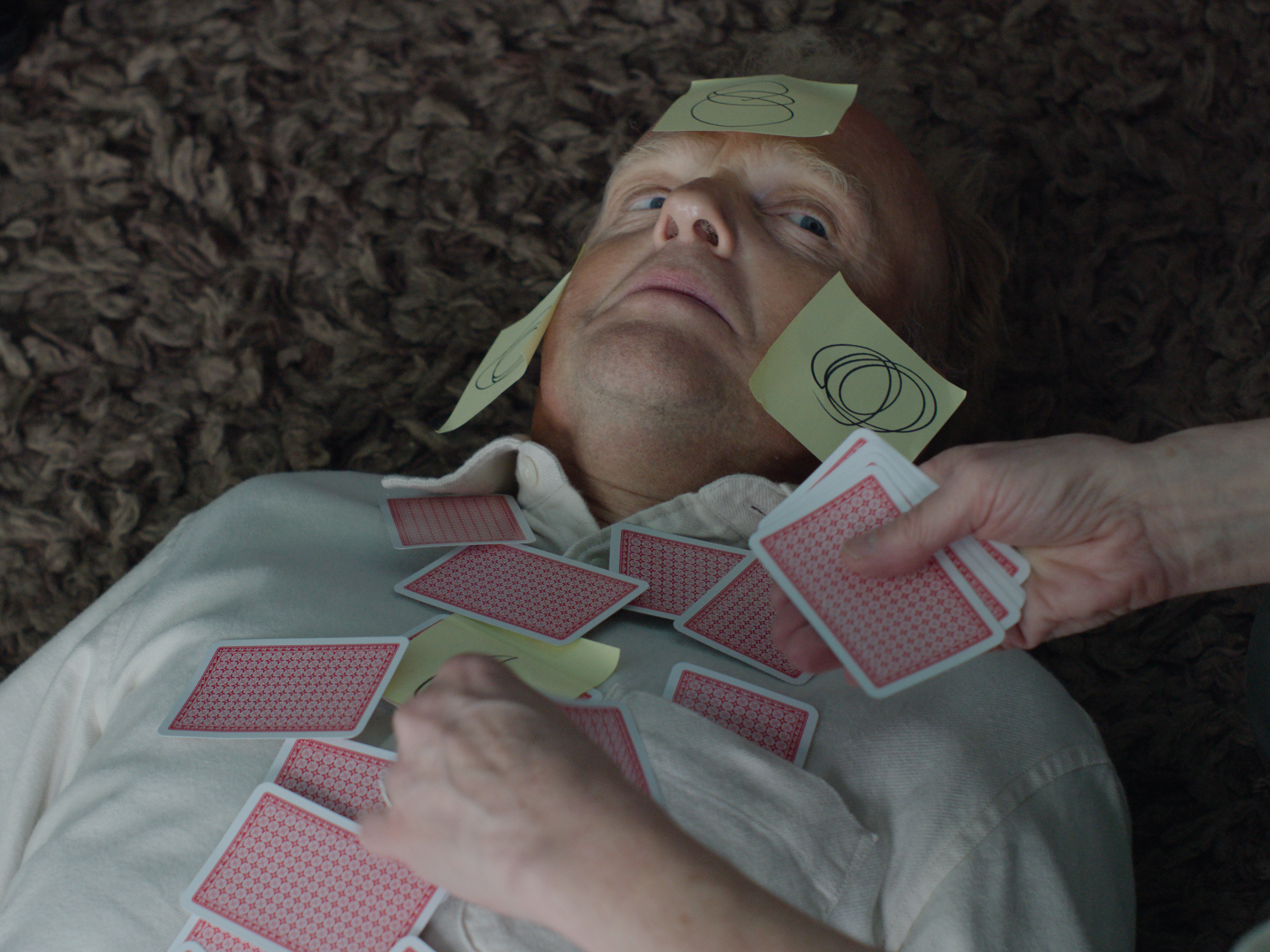 Ed Atkins confronts death at Tate Britain
Ed Atkins confronts death at Tate BritainIn his new London exhibition, the artist prods at the limits of existence through digital and physical works, including a film starring Toby Jones
By Emily Steer
-
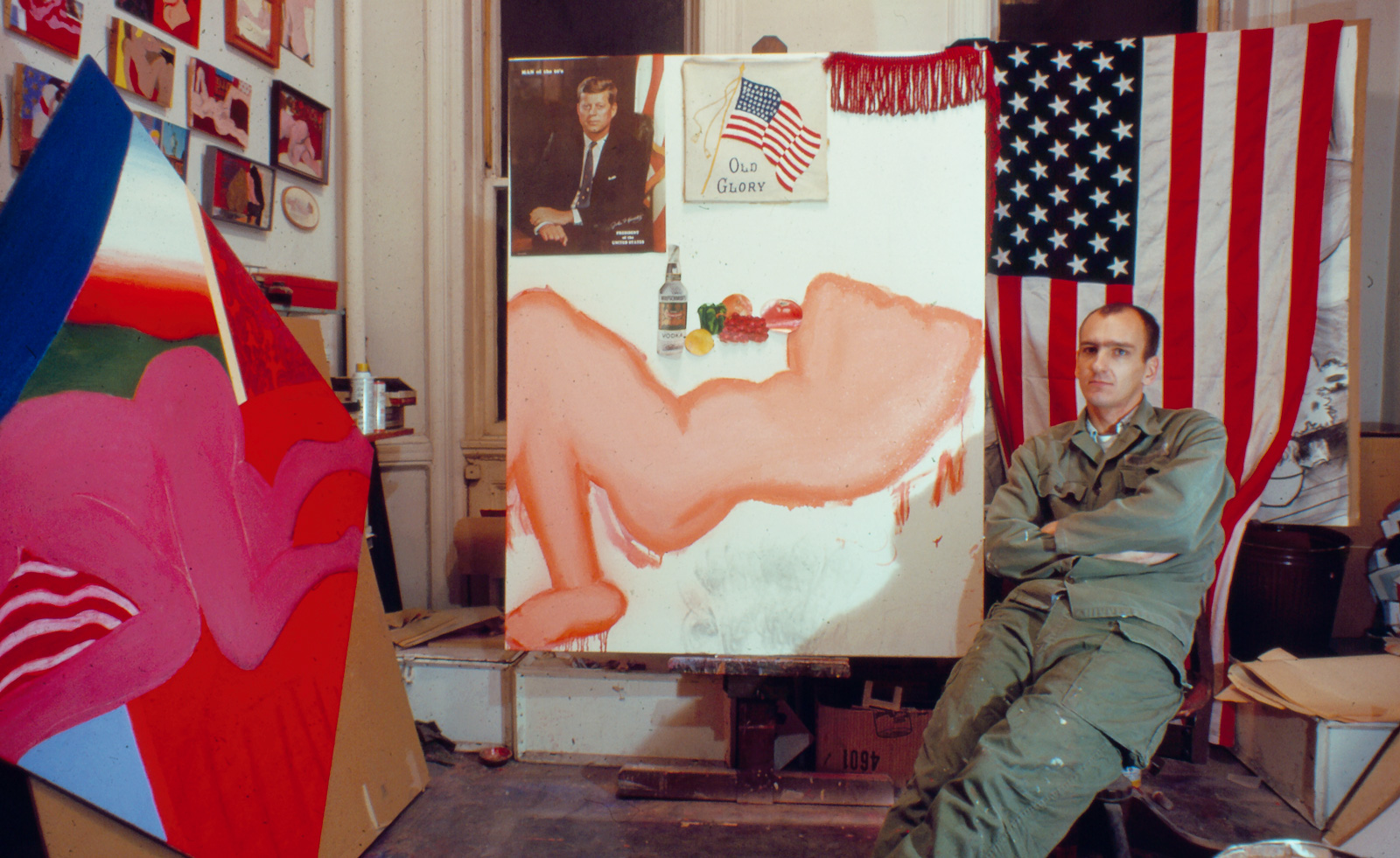 Tom Wesselmann’s 'Up Close' and the anatomy of desire
Tom Wesselmann’s 'Up Close' and the anatomy of desireIn a new exhibition currently on show at Almine Rech in London, Tom Wesselmann challenges the limits of figurative painting
By Sam Moore
-
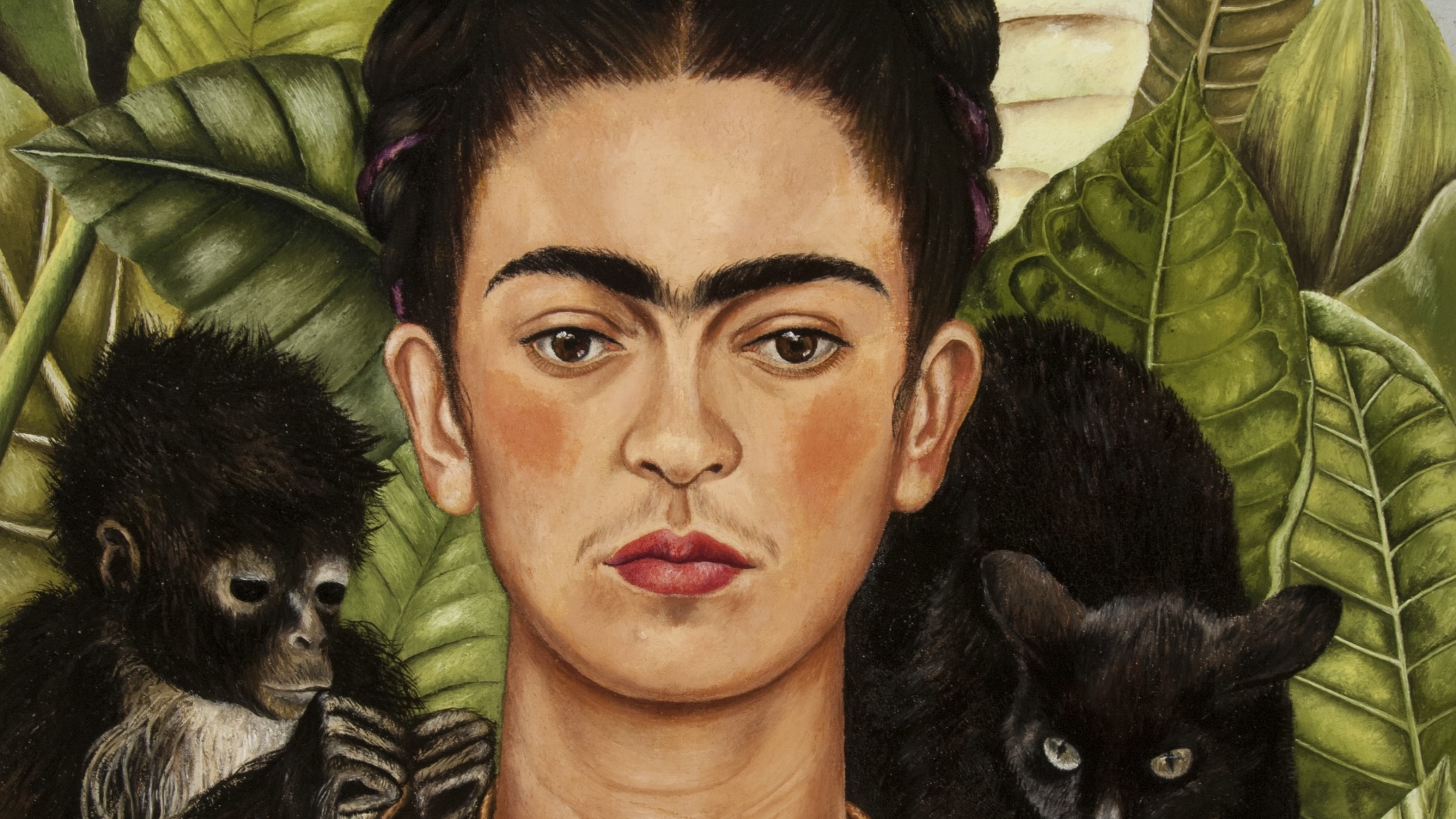 A major Frida Kahlo exhibition is coming to the Tate Modern next year
A major Frida Kahlo exhibition is coming to the Tate Modern next yearTate’s 2026 programme includes 'Frida: The Making of an Icon', which will trace the professional and personal life of countercultural figurehead Frida Kahlo
By Anna Solomon
-
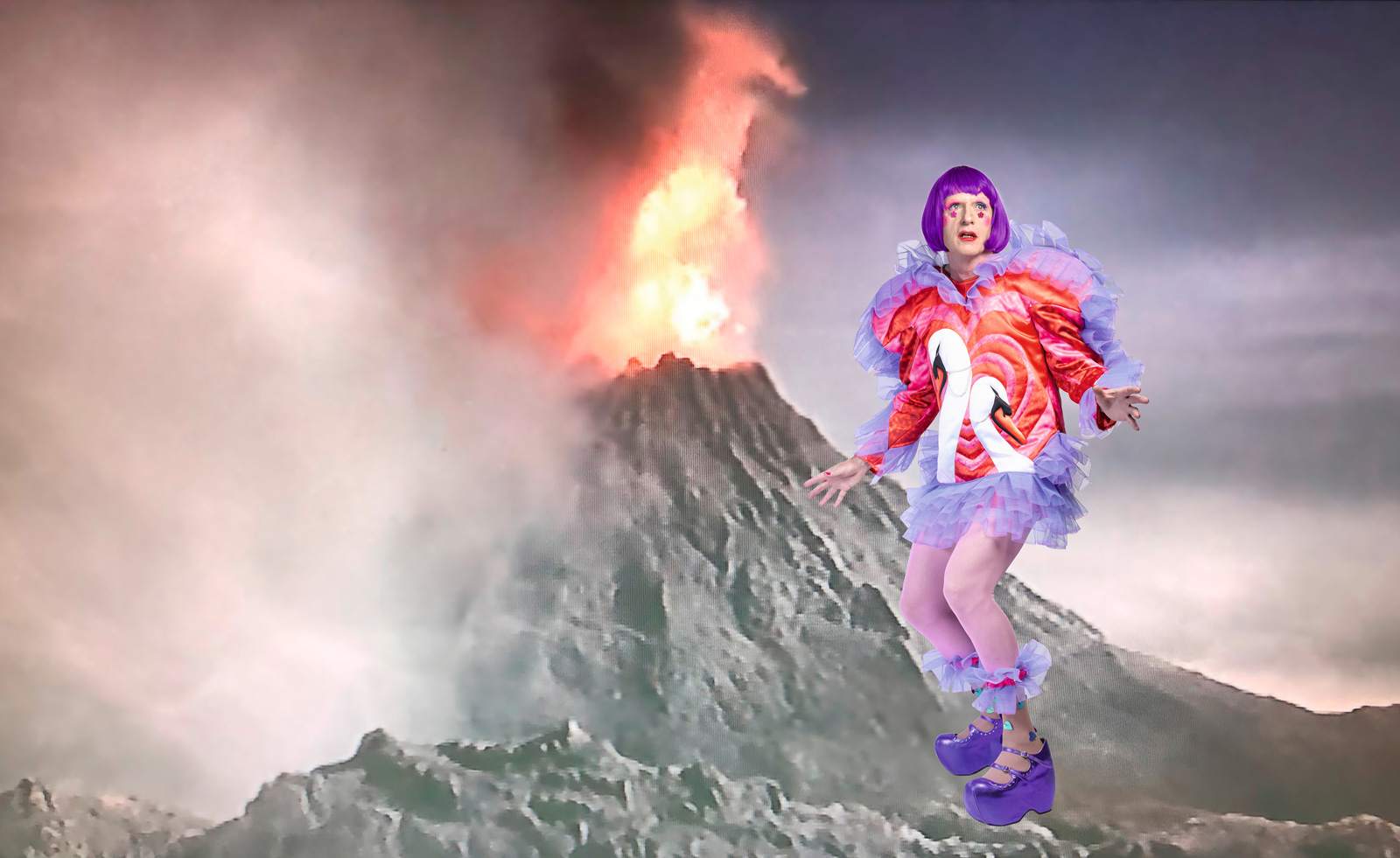 A portrait of the artist: Sotheby’s puts Grayson Perry in the spotlight
A portrait of the artist: Sotheby’s puts Grayson Perry in the spotlightFor more than a decade, photographer Richard Ansett has made Grayson Perry his muse. Now Sotheby’s is staging a selling exhibition of their work
By Hannah Silver
-
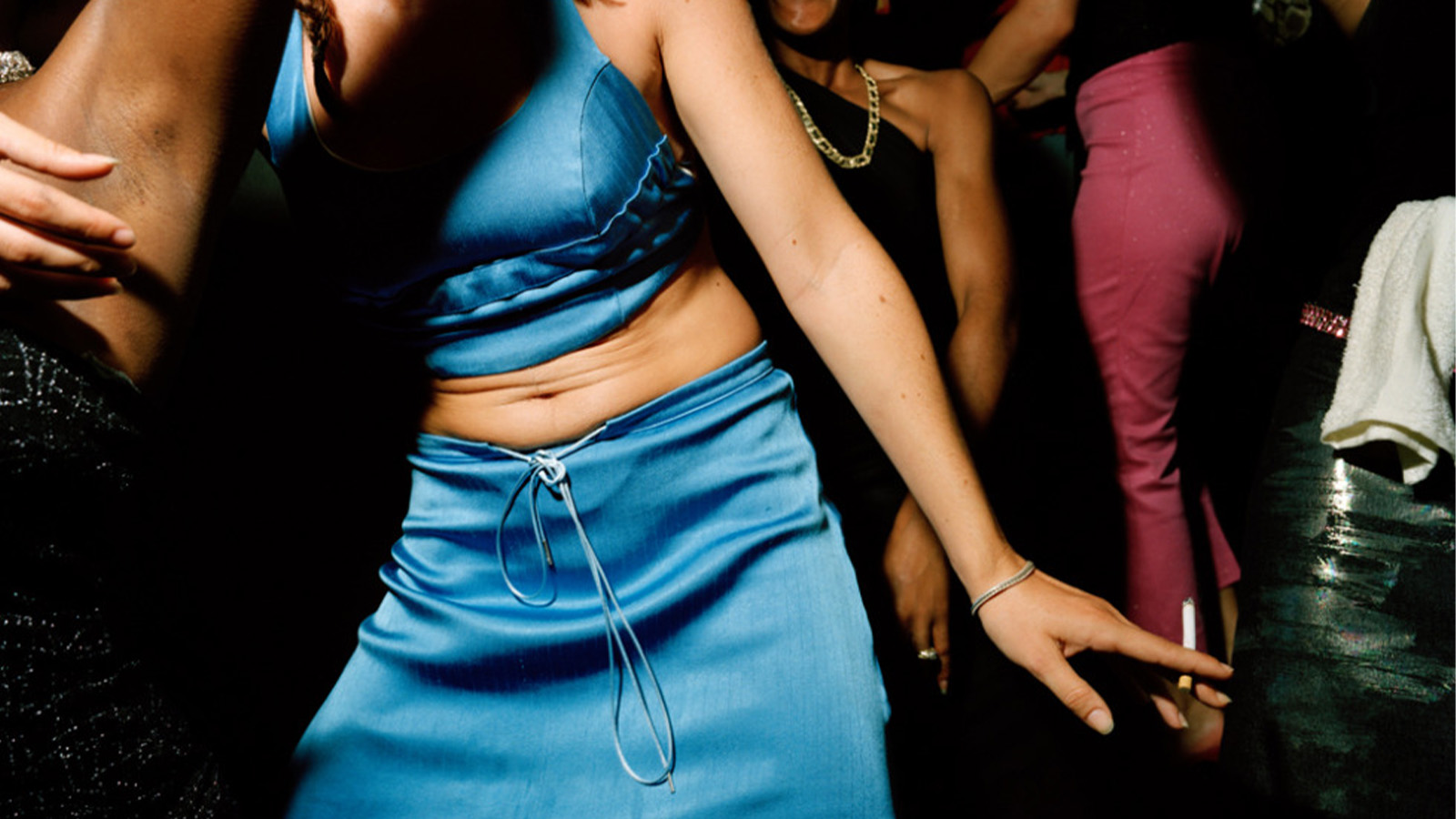 From counter-culture to Northern Soul, these photos chart an intimate history of working-class Britain
From counter-culture to Northern Soul, these photos chart an intimate history of working-class Britain‘After the End of History: British Working Class Photography 1989 – 2024’ is at Edinburgh gallery Stills
By Tianna Williams